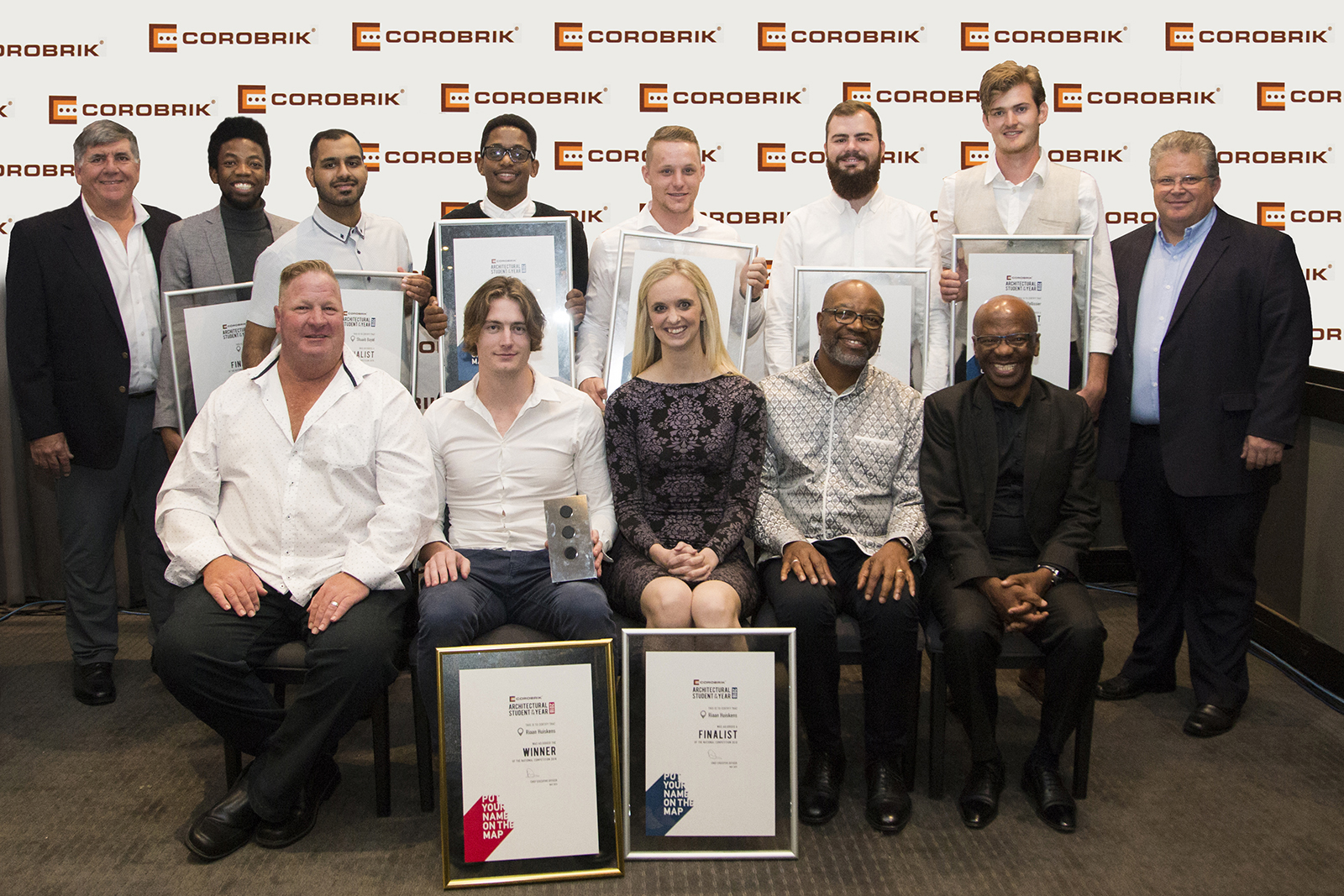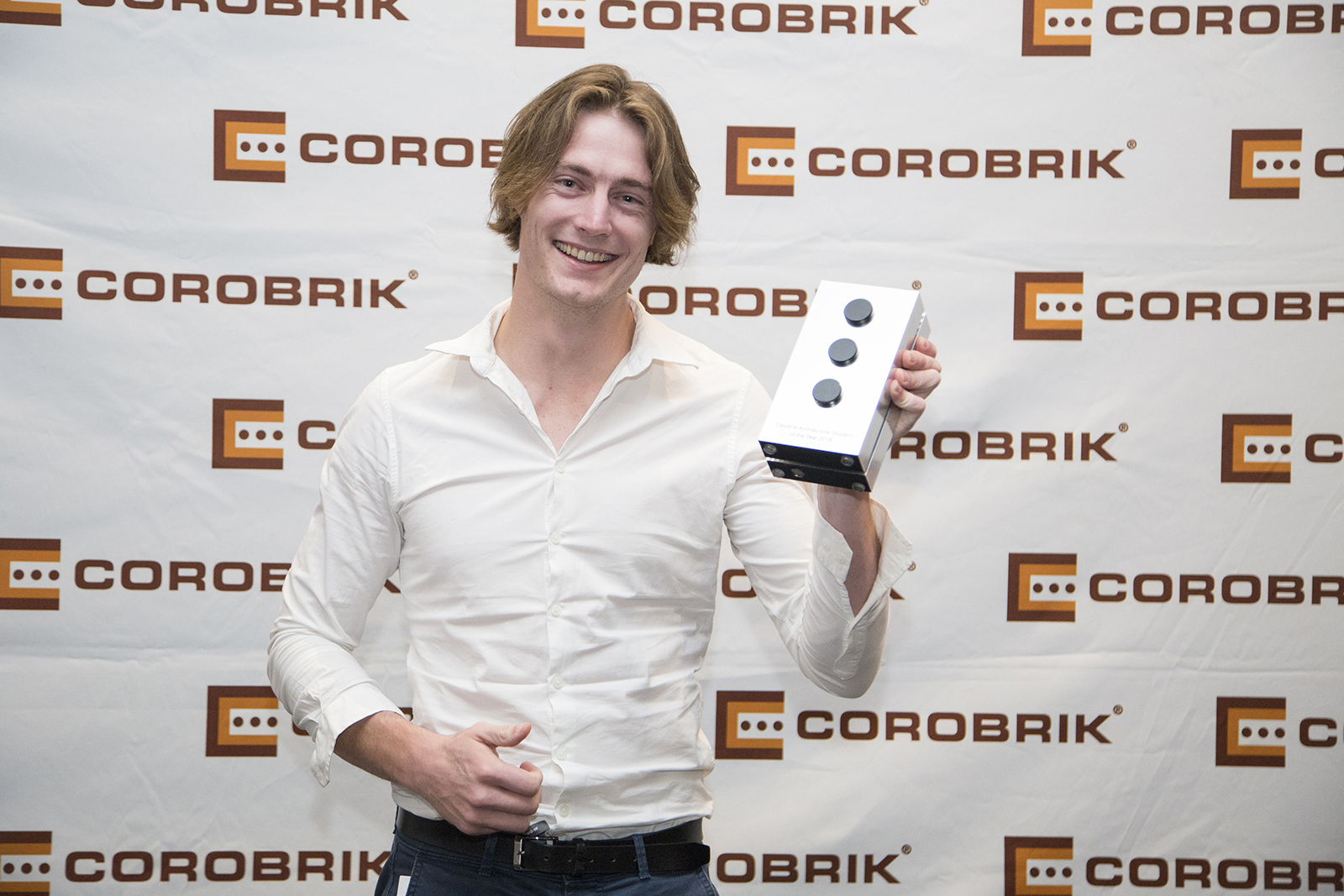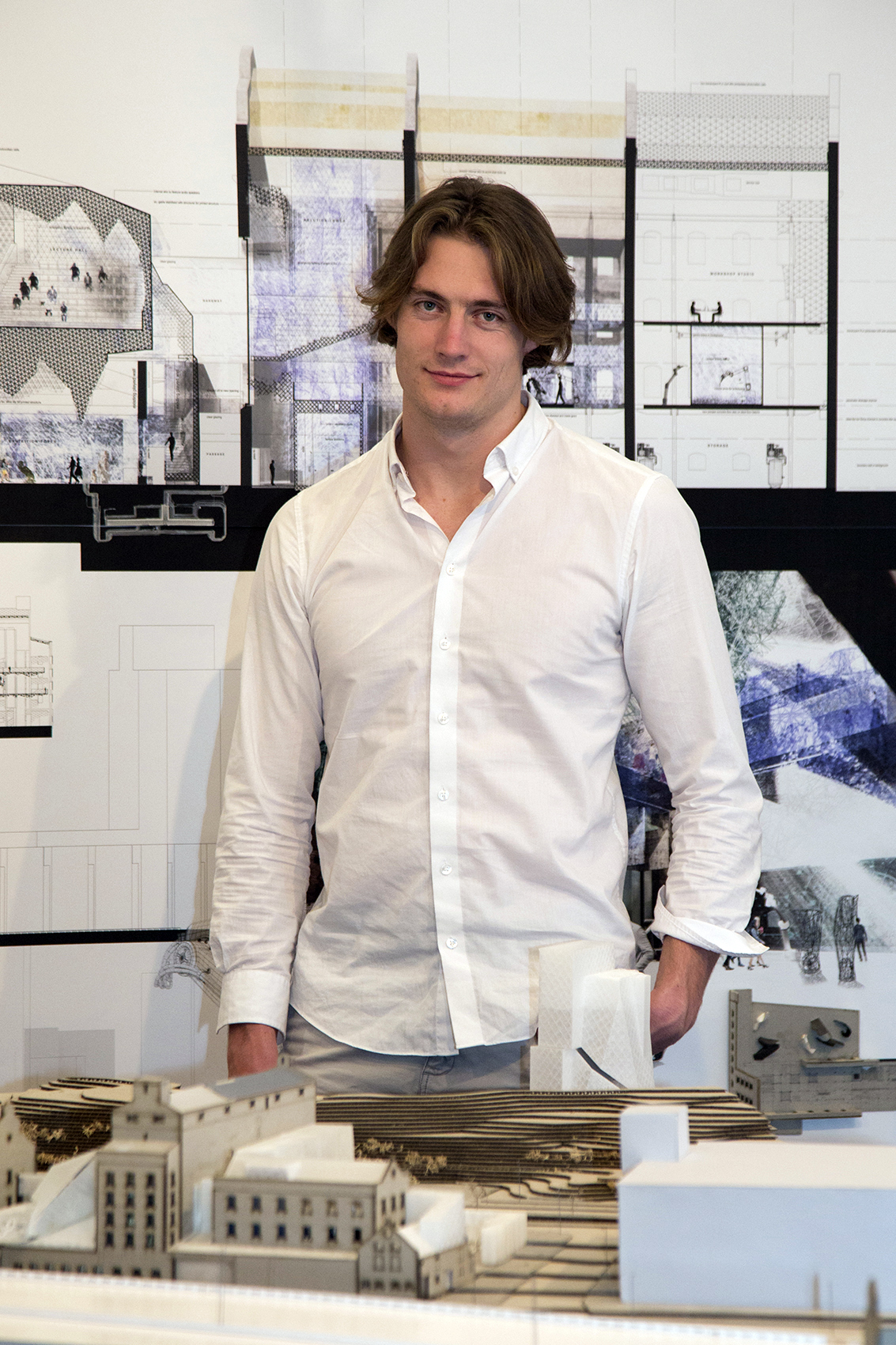Eight regional finalists from universities across the country competed for a national title and a prize of R70 000 at the Corobrik Architectural Student of the Year Awards.
Related: OUR THREE MOST-VIEWED ARCHITECT’S PLANS

The finalists, with the judges and Corobrik directors.
This year’s awards saw no shortage of talent. From the design of an innovation farm using cannabis as alternative building material, to the reimagining of an informal settlement focusing on clay brick making to prevent environmental damage, the finalists impressed with their out-of-the-box designs.
In the end, it was NMMU’s Riaan Huiskens who walked away with the top prize. His work entitled “The design of a 3D printing facility in Central Port Elizabeth”, depicts The Premier Mill building, a historical urban artefact in the Eastern Cape, as the host of a 3D printing facility. His thesis opens the discussion on recycling existing traditional infrastructure and pushes the boundaries by incorporating digital fabrication technology.
YOU MIGHT LIKE: AN UPDATED HERITAGE HOME IN HOUGHTON
We caught up with Riaan to discuss the competition, his thesis, what inspires him and more:

1. Tell us about the Corobrik Awards and what did it feel like being chosen as the winner?
Being selected as one of the eight finalists was overwhelming and winning was a very special way to end one’s architectural studies and start a career in the profession.
2. Why did you decide to study architecture?
I was exposed to architectural thinking from a young age. The way of thinking is what drew me to it. The manner in which problems are approached, seen as opportunities, and then solved is often the beauty in architecture.
3. Why do you think your thesis stood out?
The other projects at the awards, while very well executed, explored topics that are familiar to us. My treatise explored a future mode of making and a digital tectonic in architecture. It explores the use of future technologies to re-birth an urban artefact, and exposes the public to a new realm of technology based on a historical fixture of the city. The project therefore dealt with heritage, sustainability and urbanising through innovation.
4. Who or what is your biggest inspiration?
It is difficult to identify a single point of inspiration, there have been many influences. Though I think someone like Elon Musk is a great source of inspiration. He pushes the boundaries to achieve the seemingly impossible. The self-landing rocket is one of those impossible ideas and thanks to his company SpaceX, it has been done.

5. Explain your architectural style in short.
The way I generate my projects is through a process of simplifying to achieve architecture that reflects a single intention. Style is a thing of era, making architecture for me is still something very new and I think once I become a mature architect, a distinct way of operating will be identified. It’s an identity that is defined over time.
6. What can we expect from you in the future?
My only answer to this, at present, would be to maintain an attitude that explores the ‘what if’s’ and challenges the ‘why not’s’.
7. What’s your dream project?
Designing a place for people to live in, something like an urban precinct, from the urban to the architectural scale. From the setup of the spatial structure to the actual buildings within the spatial network. There is something special about designing space from the urban scale down to the millimetres of the architecture.
8. Any advice for aspiring architects?
Architecture is something that requires a great amount of self-investment. If you’re interested in studying it or already doing so just know that it really is an all-in lifestyle.

